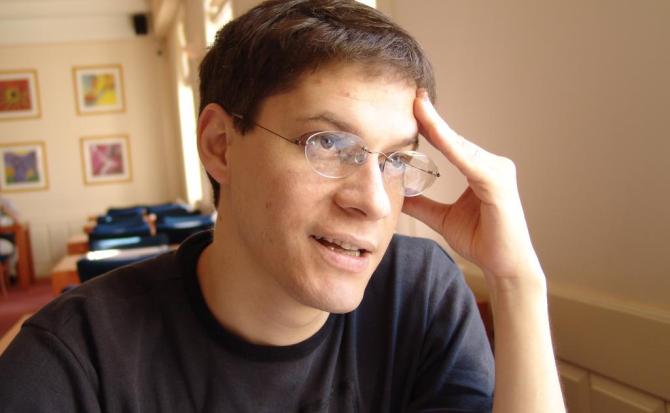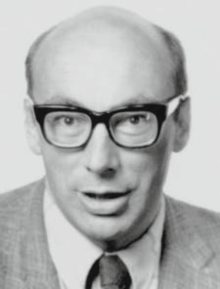Margaret Hamilton — August 17, 1936 –
Margaret Hamilton is a computer scientist, systems engineer, and entrepreneur. She was the Director of the Software Engineering Division of the MIT Instrumentation Laboratory, which developed on-board flight software for the Apollo space program. From 1961 to 1963, Hamilton worked on the SAGE Project at the MIT Lincoln Laboratory. The lab gave new recruits an “impossible” coding task to welcome them—a task Hamilton was able to solve. The computer systems developed from this project became the computing foundation for the NORAD anti-ballistic U.S. program. Hamilton’s work in this project led to her position as the lead developer for the Apollo space program flight software.
While at MIT in the early 1960s, Hamilton also reportedly coined the term “software engineering,” to give the discipline the same level of legitimacy as others. Hamilton is the founder and CEO of Hamilton Technologies, Inc.
David Heinemeier Hansson October 15, 1979 –
David Heinemeier Hansson, known as DHH, is a Danish programmer. He is the creator of the Ruby on Rails web development framework, and a founder and CTO of Basecamp (first known as 37signals). Rails was created as an internal tool for 37signals before being released in 2004. In 2005, DHH was recognized by Google and O’Reilly with the “Hacker of the Year” award for his Rails development. Hansson says he wrote the framework to optimize it for “programmer happiness and beautiful code,” echoing the structural motivations for the creation of Ruby.
Miguel de Icaza — 1972 –
 Born in Mexico City, Miguel de Icaza studied mathematics at the city’s top educational institution, the Universidad Nacional Autonoma de Mexico (UNAM), but never received a degree. Instead, de Icaza began to write free software around 1992, the best known of which led to the influential GNOME, Mono, and Xamarin projects. Partnering with fellow engineer Federico Mena in August 1997, the GNOME project sought to create a free desktop environment and component model for Linux and other Unix-like operating systems.
Born in Mexico City, Miguel de Icaza studied mathematics at the city’s top educational institution, the Universidad Nacional Autonoma de Mexico (UNAM), but never received a degree. Instead, de Icaza began to write free software around 1992, the best known of which led to the influential GNOME, Mono, and Xamarin projects. Partnering with fellow engineer Federico Mena in August 1997, the GNOME project sought to create a free desktop environment and component model for Linux and other Unix-like operating systems.
Two years later, de Icaza co-founded a free software company that created the Mono Project to allow the use of Microsoft’s new .NET development platform on Linux and Unix-like platforms. Besides developing and leading Mono, de Icaza is an advocate for Microsoft open tech and endorses Microsoft’s Office Open XML document standard.
Mark Dean — March 2, 1957 –
 Computer scientist and engineer Mark Dean graduated at the top of his class at the University of Tennessee in 1979. After landing a job at IBM post-college, Dean ended up developing many of Big Blue’s landmark technologies. His important work led to the creation of the color PC monitor, the Industry Standard Architecture system bus, which made it easy to plug external devices into IBM PCs, and the first gigahertz chip. In particular, the chip was a revolutionary piece of technology development as it was able to do a billion calculations a second.
Computer scientist and engineer Mark Dean graduated at the top of his class at the University of Tennessee in 1979. After landing a job at IBM post-college, Dean ended up developing many of Big Blue’s landmark technologies. His important work led to the creation of the color PC monitor, the Industry Standard Architecture system bus, which made it easy to plug external devices into IBM PCs, and the first gigahertz chip. In particular, the chip was a revolutionary piece of technology development as it was able to do a billion calculations a second.
The recipient of three of the company’s original nine patents, Dean has received more than 20 patents in total. In 1996, he was named an IBM fellow, the first African-American to ever receive the honor. A year later, he was honored with the Black Engineer of the Year President’s Award and was inducted into the National Inventors Hall of Fame. In 2001, he was tapped to be a member of the National Academy of Engineers.
Kathleen Booth — 1922 –
 Kathleen Booth worked at Birkbeck College, University of London, from 1946-1962 and is credited with developing the first assembly language. With the help of husband John Von Neumann and a small research group, she constructed three machines including ARC (Automatic Relay Computer), SEC (Simple Electronic Computer), and APE(X)C (All-purpose Electronic Rayon Computer). Because the first computers were programmed by writing a series of 0s and 1s, an assembly language provided simpler and more reliable programming.
Kathleen Booth worked at Birkbeck College, University of London, from 1946-1962 and is credited with developing the first assembly language. With the help of husband John Von Neumann and a small research group, she constructed three machines including ARC (Automatic Relay Computer), SEC (Simple Electronic Computer), and APE(X)C (All-purpose Electronic Rayon Computer). Because the first computers were programmed by writing a series of 0s and 1s, an assembly language provided simpler and more reliable programming.
In 1957, Booth co-founded the School of Computer Science and Information Systems at Birkbeck College. In 1958, she published a book on programming APE(X), Programming for an Automatic Digital Calculator, which was one of the early books on programming and one of the first by a female author.
Dorothy Vaughan — September 20, 1910 – November 10, 2008
Dorothy Vaughan was an American mathematician and computer programmer. During World War II, she began working at the Langley Memorial Aeronautical Laboratory on a temporary war job. Two years after President Roosevelt signed Executive Order 8802, the lab began hiring black women to meet the demand for processing research data. Vaughan was assigned to the segregated West Area Computing Unit and served as the National Advisory Committee for Aeronautics’ (NACA) first African-American manager. When NACA was incorporated into NASA, the segregated facilities were closed and the space program began using electronic computers. Vaughan later became an expert at FORTRAN, a language used for scientific and algebraic applications.
In 2016, a book by Margot Lee Shetterly—Hidden Figures: The American Dream and the Untold Story of the Black Women Mathematicians Who Helped Win the Space Race—drew attention to the contributions of the West Computers. The book was made into an acclaimed film.
Mary Ann Horton — November 21, 1955 –
 Mary Ann Horton is a pioneer computer scientist and transgender educator. Horton received her Ph.D in Computer Science from the University of California at Berkeley in 1981 and contributed to the development of Berkeley UNIX. The latter development led to the growth of Usenet. Eventually, UNIX became the software platform for Sun Microsystems. In addition to this work, Horton specifically contributed to tools such as vi, termcap/terminfo, and curses.
Mary Ann Horton is a pioneer computer scientist and transgender educator. Horton received her Ph.D in Computer Science from the University of California at Berkeley in 1981 and contributed to the development of Berkeley UNIX. The latter development led to the growth of Usenet. Eventually, UNIX became the software platform for Sun Microsystems. In addition to this work, Horton specifically contributed to tools such as vi, termcap/terminfo, and curses.
While her contributions to tech are immense, Horton is also recognized for her LGBT work as a diversity advocate. Currently, she is a chair for Transgender at Work and is a board member of It’s Time, America.
Monica S. Lam —
 Monica Lam is a Professor in the Computer Science Department at Stanford University. She is the faculty director of the Stanford MobiSocial Computing Lab and co-Principal Investigator in the Programmable Open Mobile Internet 2020 project. She has worked on compiler optimization and software analysis to improve security and co-authored Compilers, Principles, Techniques, and Tools (2nd Edition).
Monica Lam is a Professor in the Computer Science Department at Stanford University. She is the faculty director of the Stanford MobiSocial Computing Lab and co-Principal Investigator in the Programmable Open Mobile Internet 2020 project. She has worked on compiler optimization and software analysis to improve security and co-authored Compilers, Principles, Techniques, and Tools (2nd Edition).
Lam’s contributions in compiler optimizations include software pipelining, data locality, and parallelization. In program analysis, her insight is critical in security tools that detect cross-site scripting and SQL injection bugs in Java/JSP web apps. Her current research interests include building an open and federated social computing infrastructure.
Sally Floyd —
 Sally Floyd studied Sociology at the University of California at Berkeley in the early 1960s but became a computer systems engineer after college. In the late 60s, Floyd built the computers that run the Bay Area Rapid Transit (BART) trains. After receiving a Master’s degree in Computer Science in 1987 and a Ph.D in 1989 from Berkeley, she spent 15 years at the International Computer Science Institute (ICSI). There, she worked on Internet congestion control and co-designed the Random Early Detection, a queueing discipline for network schedulers.
Sally Floyd studied Sociology at the University of California at Berkeley in the early 1960s but became a computer systems engineer after college. In the late 60s, Floyd built the computers that run the Bay Area Rapid Transit (BART) trains. After receiving a Master’s degree in Computer Science in 1987 and a Ph.D in 1989 from Berkeley, she spent 15 years at the International Computer Science Institute (ICSI). There, she worked on Internet congestion control and co-designed the Random Early Detection, a queueing discipline for network schedulers.
This research led to the discipline’s study and development of active queue management, the latter of which allows transport mechanisms of the Internet to operate smoothly in the face phenomenal traffic growth. As of 2017, Floyd is one of the most cited researchers in computer science in the world.
Peter Landin — June 5, 1930 – June 3, 2009
 Peter John Landin was a bisexual British computer scientist, political radical, and gay rights campaigner. In the early days of computing, software written for one make of machine could not run on any other. Computer scientists at the time wanted to define “programming languages” that could be universally understood. Early in his career, Landin had a great insight: that the meaning of a computer program could be pinpointed in mathematical logic and liberated from the control of the manufacturer. Landin is also responsible for inventing the SECD machine, the first abstract machine for a functional programming language.
Peter John Landin was a bisexual British computer scientist, political radical, and gay rights campaigner. In the early days of computing, software written for one make of machine could not run on any other. Computer scientists at the time wanted to define “programming languages” that could be universally understood. Early in his career, Landin had a great insight: that the meaning of a computer program could be pinpointed in mathematical logic and liberated from the control of the manufacturer. Landin is also responsible for inventing the SECD machine, the first abstract machine for a functional programming language.
Landin was an active anti-war demonstrator for the Committee of 100. In the early 1970s, Landin became a leader in the Gay Liberation Front.

